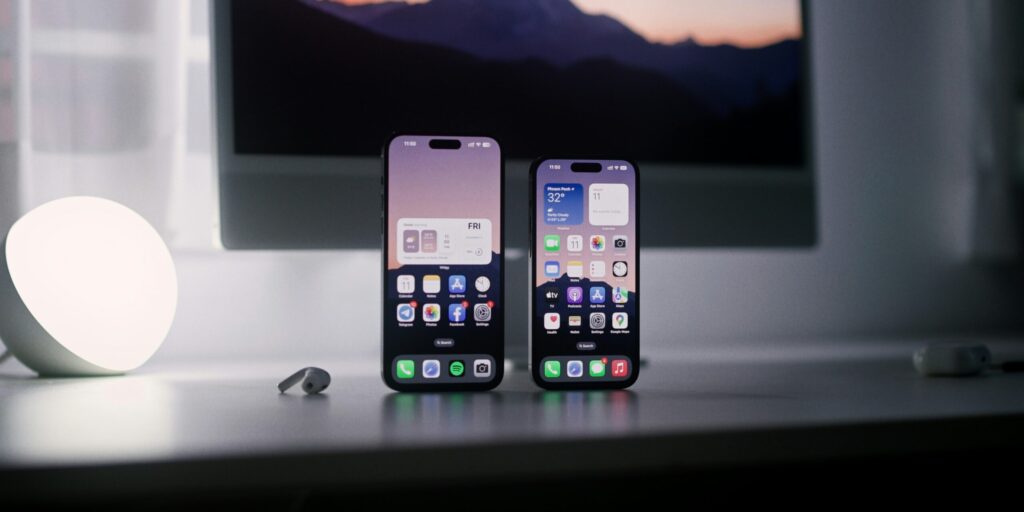Apple staged its annual fall keynote on Tuesday at the Steve Jobs Theater in Cupertino, unveiling a sweeping lineup of devices that mark the company’s most ambitious hardware refresh in years. Branded the “Awe-Dropping” event, the showcase centered on the debut of the iPhone 17 series, new Apple Watches, and the latest generation of AirPods Pro, while also underscoring Apple’s long-term manufacturing and artificial intelligence strategy.
The iPhone 17 lineup introduced four models: the standard iPhone 17, the lighter iPhone 17 Air, and the higher-end Pro and Pro Max editions. All are powered by the new A19 processor, a chip that Apple says dramatically improves performance efficiency. The devices feature increased RAM, improved vapor-chamber cooling for more stable graphics and gaming, and a 48-megapixel main camera with enhanced low-light and computational photography capabilities. The Pro Max model adds an exclusive telephoto lens system for improved zoom performance, further distinguishing Apple’s flagship from its competitors.
Apple executives emphasized that the devices are not only more powerful but also more attuned to the needs of professionals and creators. The upgraded cooling system, for instance, is designed to sustain high performance during resource-intensive tasks such as video editing or extended gaming. For consumers, Apple pointed to the 48 MP camera upgrade as a major step forward in capturing sharper, more dynamic images—an area of ongoing competition with Samsung, Google, and Huawei.
In addition to its smartphones, Apple refreshed its smartwatch lineup. The company introduced the Apple Watch Series 11, the rugged Apple Watch Ultra 3, and a new Apple Watch SE aimed at budget-conscious consumers. All three watches come with brighter displays, faster processors, and improved connectivity features. They also incorporate updated health sensors, including advanced heart-rate tracking and oxygen monitoring, reinforcing Apple’s position as a leader in wearable health technology.
The wearables expansion continued with the announcement of the AirPods Pro 3. The new earbuds bring incremental sound improvements but stand out most for their integration of health-focused sensors. Apple revealed that the Pro 3s can now measure heart rate and body temperature, positioning the product not only as an audio device but as an extension of its health ecosystem. This move comes as rival companies also race to embed biometric capabilities into everyday consumer devices.
Beyond hardware, Apple used the keynote to highlight its evolving software and design philosophy. The company unveiled a new “liquid glass” user interface that reimagines the look and feel of iOS, showcasing smoother animations and a more tactile, fluid experience across devices. The redesign is accompanied by deeper integration of AI-powered features, including real-time translation, contextual recommendations, and advanced personalization tools meant to keep users more seamlessly connected across the Apple ecosystem.
Perhaps the most consequential announcement of the day was Apple’s pledge to invest $600 billion in U.S. manufacturing over the next four years. The commitment, executives said, is part of a broader strategy to mitigate global supply chain vulnerabilities and reduce reliance on overseas production. It also signals a response to rising trade tensions and tariff pressures that have reshaped the technology sector. By building more capacity domestically, Apple aims to bolster resilience, create jobs, and reassure investors and policymakers of its ability to maintain product flow in an increasingly uncertain global landscape.
Industry analysts noted that Apple’s announcements reflected both immediate consumer appeal and longer-term strategic positioning. The iPhone 17 series ensures Apple remains highly competitive in the premium smartphone market, while the expansion of wearables and AirPods into health monitoring aligns with growing demand for integrated digital health solutions. The AI-driven redesign of iOS indicates that Apple is determined to keep pace with rivals like Google and Microsoft, both of which have leaned heavily into artificial intelligence as a defining feature of their platforms.
Still, questions remain about how Apple’s products will be received in a crowded marketplace. While early reaction to the iPhone 17’s upgrades was largely positive, some observers noted that competition in both smartphones and wearables has intensified, with many features Apple touted already available in Android alternatives. Others pointed to the company’s substantial manufacturing commitment as a signal of confidence, but one that also carries risk if consumer demand falters in a slowing global economy.
For now, the “Awe-Dropping” event reinforced Apple’s dual strategy: delivering incremental device improvements that cater to its loyal customer base while laying the groundwork for long-term resilience and growth. The iPhone 17, Apple Watch Series 11, and AirPods Pro 3 all highlight the company’s deepening integration of health, performance, and design, while its U.S. manufacturing push and AI investment demonstrate how Apple is positioning itself for a future where technology and geopolitics are increasingly intertwined.


